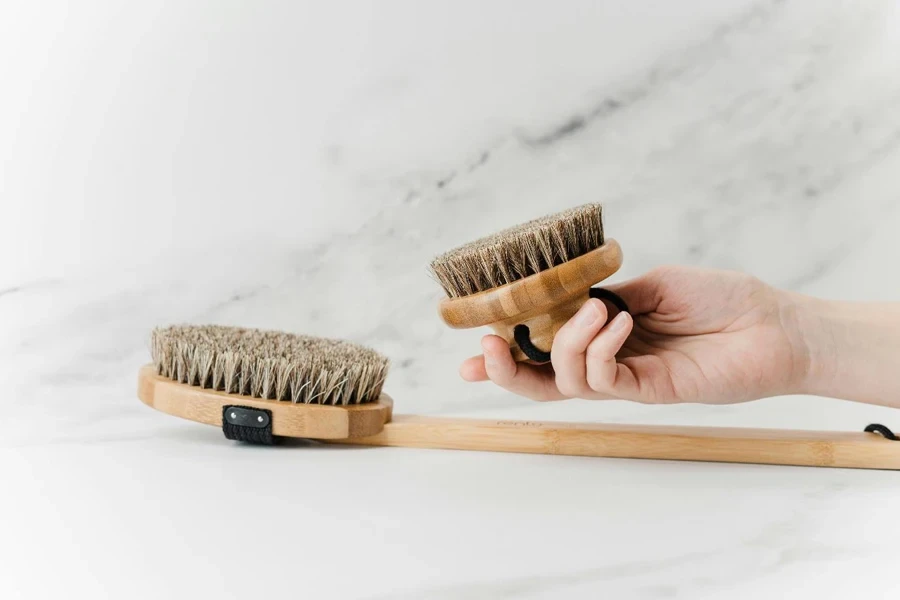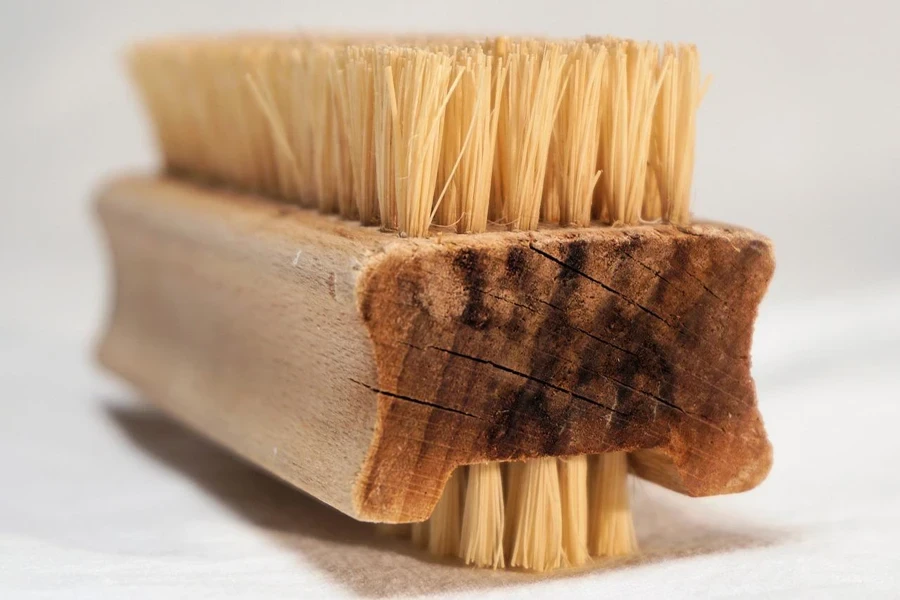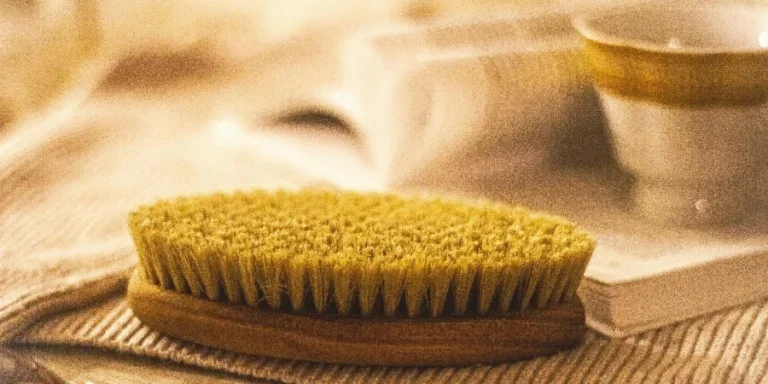Table of Contents
● Introduction
● Market overview
● Different types and their features
● Things to consider when selecting products
● Conclusion
Introduction

To maintaining cleanliness in industries like food service, manufacturing, and healthcare relies heavily on scrub brushes, which are essential tools for upholding hygiene standards in environments where cleanliness is a must. The market for scrub brushes worldwide is growing rapidly due to the rising need for specialized cleaning options. To make the right buying choices when it comes to these brushes, it’s crucial to grasp the range of brush types available and their unique uses across different settings. This comprehensive handbook offers an examination of current market trends and brush characteristics to assist companies in selecting the most suitable tools for their requirements.
Market overview

Market scale and growth
The worldwide market for scrub brushes is expected to reach $15 billion by the year 2030, with an annual growth rate of 5% from 2024 to 2030. This increase in market size is being influenced by growing demand in areas such as personal hygiene products, household cleaning supplies, and industrial uses. The market’s growth is further boosted by the increasing focus on cleanliness standards in sectors like food service and healthcare, where specialized cleaning equipment is crucial. The market is also experiencing growth due to the increasing use of eco-friendly materials and improvements in brush technology.
Market segmentation
The market for scrub brushes is divided into categories based on the type of brush and the materials they are made from, as well as their intended use in various settings, which are essential for their development and progressiveness. There are different types of brushes available on the market, including those for facial cleansing purposes, toothbrushes for dental hygiene maintenance, and industrial and home cleaning brushes that serve specific cleaning requirements. When it comes to materials used in these brushes, Nylon, Polyester, and fibers are the most prominent ones, offering unique advantages such as sturdiness, resistance to chemicals, and environmentally friendly properties. In the realm of consumer products, the focus lies on areas like personal hygiene, involving brushes for skincare, grooming, and household upkeep that continue to fuel market growth significantly.
Regional insights
The Asia Pacific region boasts the biggest market share due to the strong demand for personal care and construction products in countries such as China and India. The dominance of this region is mainly driven by urbanization and rising disposable incomes that fuel the need for household and industrial cleaning equipment. North America and Europe are also key players in the market, with a notable interest in sustainable cleaning methods. The increasing focus on sanitation in public areas and healthcare facilities continues to drive the market forward in these regions.
Different types and features

Synthetic fiber brushes
Synthetic fiber brushes are specially designed to last and withstand tough chemicals in places like food service and healthcare settings where thorough and regular cleaning is vital. They usually come with bristles crafted from materials like nylon, polypropylene, and polyester. For example, nylon has a strength of about 75 MPa and shows great fatigue resistance, enabling these brushes to retain their form and efficiency over time. Polypropylene is frequently selected for its capacity to withstand cleaning substances without deteriorating due to its resistance to acids and bases. Furthermore, a key advantage of these fibers is their low moisture absorption properties that deter proliferation, making them well-suited for hygienic purposes.
Natural fiber brushes
Eco-friendly brushes made from natural fibers provide a sustainable option that can withstand high temperatures and are often used for gentle yet efficient cleaning purposes. Tampico fibers can handle temperatures up to 275°F, while coconut fibers are recognized for their stiff texture and durability in wet environments. These natural fibers possess a composition that enables them to absorb and dispense liquids evenly, making them ideal for tasks such as cleaning delicate surfaces or polishing objects. The material’s ability to break down naturally also supports eco-friendly practices by lessening the impact on the environment while maintaining cleaning effectiveness.
Wire brushes
Wire brushes are crafted to tackle cleaning tasks that demand high abrasiveness levels effectively. These brushes typically boast bristles constructed from either steel or carbon steel with varying tensile strengths falling between 500 to 1,200 MPa. Such robust strength permits the bristles to eliminate residues like rust scale and paint without succumbing to breakage or bending. Moreover, stainless steel wire brushes display resistance against oxidation and can withstand temperatures surpassing 1,000°F, which are attributes that render them suitable for cleansing grills, ovens, and heavy-duty industrial machinery. The bristles are usually bent or twisted to make them stiffer and more efficient at getting into gaps and corners.
Specialized brushes
Brushes made for specilized tasks are equipped with specific features to suit their purposes precisely. Grout brushes come with angled bristles crafted from durable materials like nylon or polyester cut to the right length for thorough cleaning without harming tiles. Bottle brushes usually sport a flexible core of twisted stainless steel that enables bending to reach tight spots along with soft nylon bristles, for gentle but effective cleaning without causing any scratches. The scrub brushes for decks come with stiff bristles that are usually attached to swivel heads with adjustable angles for cleaning large and uneven outdoor areas effectively and efficiently. The handles are typically made stronger with fiberglass or aluminum to endure the pressure from heavy cleaning jobs.
Things to consider when selecting products

Material and durability
The type of material used for the bristles has an impact on how well a scrub brush works and how long it lasts. Nylon bristles are durable and flexible due to their strength of 75-80 MPa and melting point of about 220°C, making them perfect for tasks that require continuous mechanical action. On the other hand, polypropylene bristles are resistant to chemicals and have a low density of 0.90 g/cm³, which makes them suitable for applications that involve exposure to harsh chemicals since they do not absorb or degrade easily. Tampico is a type of fiber that can withstand temperatures as high as 275°F without losing its rigidity, making it an excellent option for applications involving heat exposure. Stainless steel bristles are highly durable due to their impressive tensile strength of up to 1,200 MPa and resistance to corrosion. They are particularly useful in demanding cleaning tasks in industrial settings where abrasive action is required to eliminate stubborn residues such as rust and scale.
Design and ergonomics
When choosing a scrub brush design, it’s important to think about how it works and how comfortable it is for the person using it for extended periods of time. Handles made from fiberglass or aluminum alloys are a great choice because they are strong and also lightweight, which helps reduce user fatigue without compromising durability. For instance, 6061 aluminum alloy handles with a strength of 310 MPa offer a sturdy and light option that doesn’t bend easily when pressure is applied. Incorporating features like thermoplastic rubber (TPR) grips with a Shore A hardness of 60–70 enhances grip strength and minimizes slipping even in wet conditions. Moreover, brushes equipped with swiveling heads provide enhanced flexibility for cleaning at various angles, allowing better reach into challenging spots and boosting overall cleaning effectiveness. The angle at which the bristles are trimmed is crucial and typically set between 45° and 60°, it helps keep the bristles in constant touch with the surface for optimal cleaning without requiring excessive pressure.
Specific use cases
Every cleaning job comes with its set of obstacles that call for a particular brush style to get the best outcomes possible. For example, grout brushes equipped with nylon bristles typically trimmed to a length of 10–15 mm are crafted to fit snugly into narrow grout gaps and deliver enough pressure to eliminate deep-seated grime without harming the neighboring tiles. Bottle cleaners usually come with a stainless steel core that has a diameter ranging from 1.5 to 2.0 mm for access into tight container openings. The soft bristles, typically measuring between 200 to 400 micrometers in diameter, ensure cleaning without causing any scratches. In industrial environments, wire brushes featuring crimped steel bristles that are around 300 to 500 micrometers thick are crucial for removing tough substances, like rust or paint, from metal surfaces. These brushes are made to deliver abrasive power while reducing the chance of scratching or distorting the surface material below.
Hygiene and maintenance
It is vital to maintain scrub brushes to ensure they last long and work well in places where cleanliness is crucial, like medical or food service environments. Brushes used in these settings need to be made of materials that can handle being cleaned with disinfectants and withstand high temperatures. For instance, brushes crafted from heat nylon or stainless steel can go through autoclave cycles at temperatures as high as 121°C without getting damaged. Regularly checking for indications of wear, like deformities in the bristles or damage to the handle, is essential as these problems can affect the cleaning effectiveness and safety of the brush significantly. In environments where there is a risk of contamination, cross-over issues are common, and that’s why brushes with different colors are used to avoid this problem. It is crucial that the coloring process ensures that the dyes used are durable and not prone to fading or leaking chemicals, as this could cause hygiene problems. Maintaining the quality of the brushes is crucial by following cleaning procedures such as utilizing ultrasonic cleaners for thorough cleansing to uphold their performance efficiency.
Conclusion

It’s really important to pick the right scrub brush to ensure top-level cleanliness and hygiene in different industrial settings. Knowing about the material of the brush and how it’s designed for specific jobs helps companies choose tools that make cleaning easier and last longer. Having the perfect brush for each place means keeping things clean and becoming easy and efficient all around.




